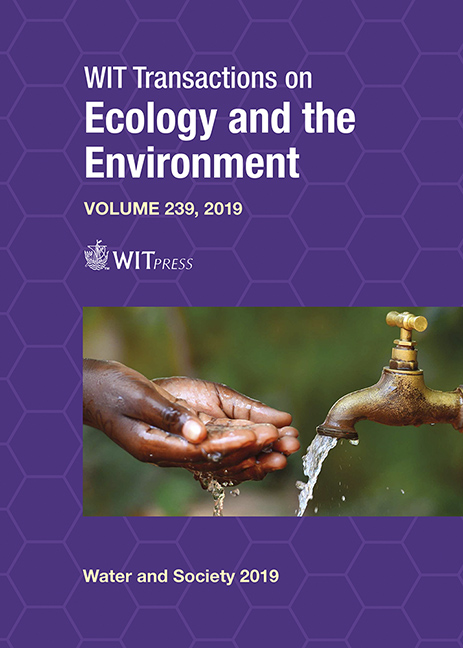WASTE MANAGEMENT STUDY IN THE LAKE BUHI PERIPHERY, BUHI, CAMARINES SUR, PHILIPPINES
Price
Free (open access)
Transaction
Volume
239
Pages
7
Page Range
305 - 311
Published
2019
Paper DOI
10.2495/WS190271
Copyright
WIT Press
Author(s)
JENNIFER M. EBOÑA
Abstract
Piggery and solid wastes monitoring was undertaken along ten (10) lakeside areas namely : Sta. Elena, Sta. Clara, San Buena, Tambo, Cabatuan, Ibayugan, Salvacion, Iraya, Ipil and Sta. Cruz of Lake Buhi in Buhi, Camarines Sur, Philippines. Key findings include: (1) a total of 331 pigpens (with an average of two heads per pigsty) proliferate the lakeshore; (2) piggery wastes are intentionally washed directly into the lake through flushing; (3) estimated volume of wastes produced is 2,019 L/day with corresponding organic loading of 0.05 mg/L which is far below the tolerable limits of 5 mg/L for class C water or lakewater; and (4) presence of municipal ordinance No. 03040 provides a framework for regulating piggery and other wastes. The findings suggest that wastes from piggery alone cannot be generalized as culprit for water pollution. This is validated by water quality monitoring quarterly report of the Department of Environment and Natural Resources (DENR) which reflects that water conforms to the standard set in terms of Biological Oxygen Demand (BOD) and other significant parameters. While it is true that nature has a self-purification process, however, if not given due attention, piggery wastes may have significant cumulative impact on the lake. However, to ensure the health of the lake and conserve the environment, the following is suggested: (1) aggressive and continuous implementation of above-mentioned ordinance; (2) initiate charging of environmental user fees system (EUFS) especially for major fish cage operators as contributors to lake eutrophication due to fish feeds overload in the course of rehabilitating the lake based on the organic loading (Polluter Pays Principle); (3) pollution prevention/cleaner production (P2/CP) options by establishing biogas systems and composting methods may be considered; and (4) strengthen integrated watershed management practices among stakeholders.
Keywords
waste management, piggery wastes, solid wastes, lake management.





